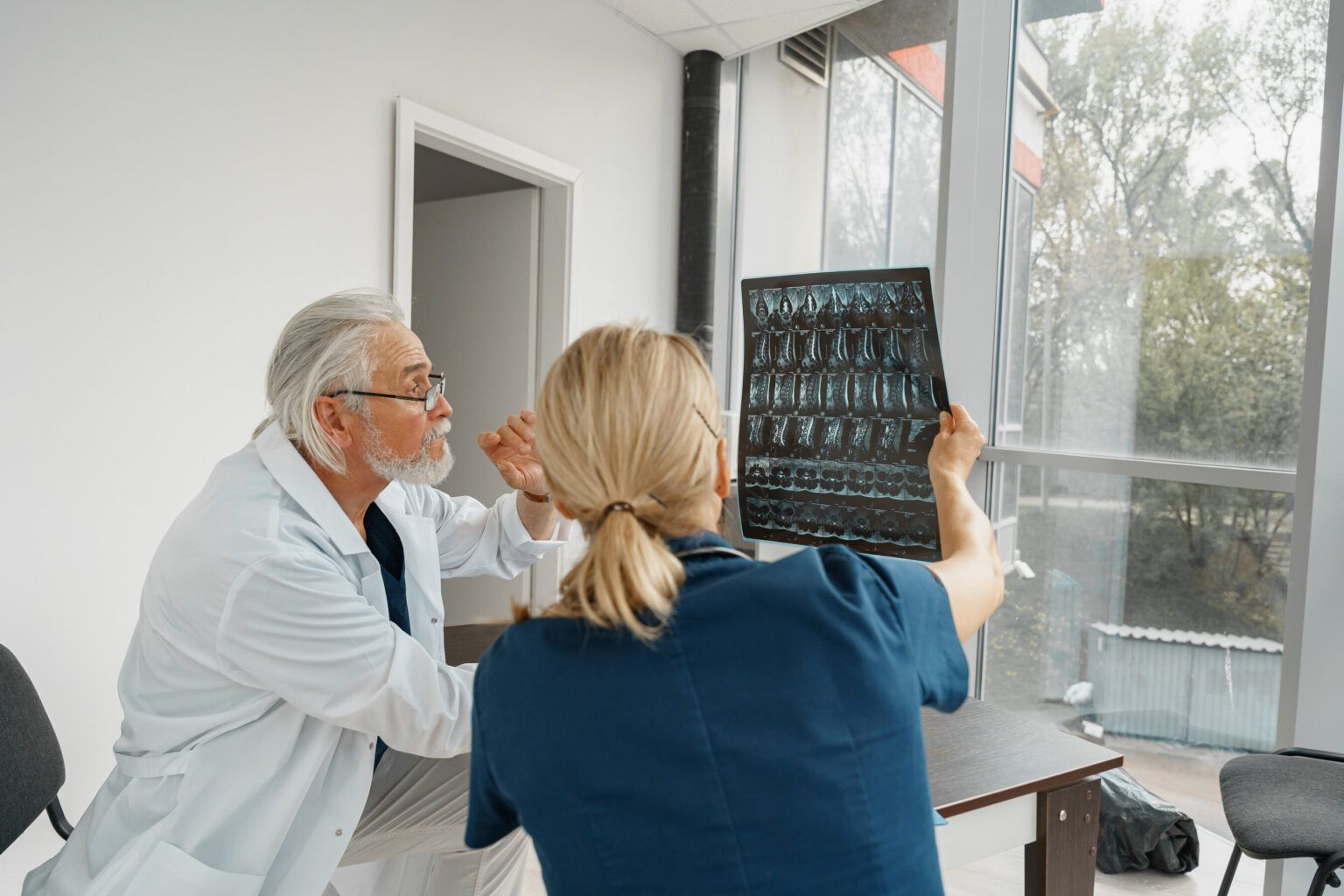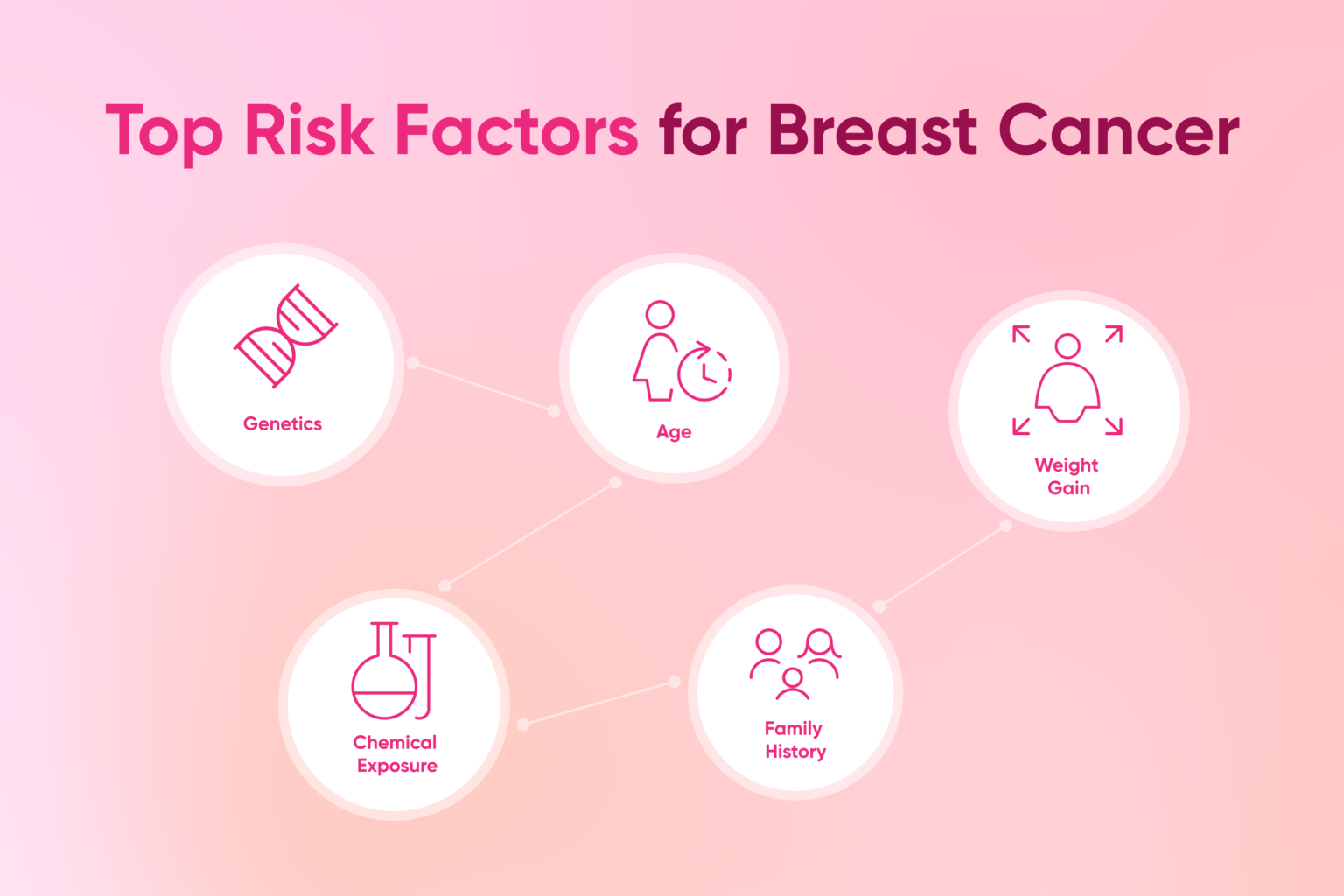
Rare forms of cancer, such as sarcomas, are sometimes caused by gene mutations. However, one can acquire these mutations rather than being born with them, for example by being exposed to cancer-causing chemicals.
When it comes to breast cancer, sarcomas are a rare form of breast cancer, typically accounting for only around 1% of all breast cancer cases.
These rare cancers (sarcomas) typically form in bone, the muscles attached to the bones, fat or connective tissues of the breasts rather than in the central breast area.
When the word sarcoma is included when naming a cancer diagnosis, it means the tumor is malignant (cancer).
There are three main types of breast sarcoma. The most common types of breast sarcoma are angiosarcomas, fibrosarcomas, and unclassified sarcomas.
Unlike most forms of breast cancer, which typically begin within the milk ducts of the breast, sarcomas take place in the connective tissues supporting the lobules and ducts of the breast. Breast sarcomas can form either as “primary” tumors, or “secondary” tumors, which stem from the spread of other cancers.
If you have mutated versions of the breast cancer genes BRCA1 or BRCA2, you may have a higher risk of developing a primary breast sarcoma, or a more advanced form of cancer. Secondary tumors, on the other hand, are more likely to develop as a result of radiation therapy, exposure to certain chemicals, and issues occurring from immune system diseases.
Because sarcoma cells occur in the connective tissues of the breast, they can act differently from typical tumors, and often mutate more rapidly. These tumors also tend to be larger and more aggressive when diagnosed compared to other tumors. Remember that the most common types of breast sarcoma are angiosarcomas, fibrosarcomas, and unclassified sarcomas.

Three Types of Breast Sarcomas
Before we get into the three types of breast sarcomas, it’s important to understand that sarcomas are rare, but unfortunately, they are sometimes caused by radiation therapy.
Yes, this means that cancer treatment such as radiation therapy can actually cause a secondary cancer, also known as a ‘new primary’ cancer. It’s unfortunate that cancer treatment can cause cancer, but it does sometimes happen.
Let’s discuss these three types of breast sarcomas in more detail below:
1. Angiosarcoma
Angiosarcomas are the most common type of breast cancer sarcoma. They begin within the cells lining the lymph vessels and blood vessels. Angiosarcomas can affect the skin or tissue of the breast, and some may become more advanced following radiation therapy around the breast area.
Angiosarcoma only accounts for around 1-2% of all sarcomas, including those found throughout other areas of the body. While this issue can affect anyone, it’s most common in people over the age of 70, and is frequently caused following a treatment for another type of breast cancer. Unfortunately, angiosarcomas grow extremely quickly, and may quickly progress to other parts of the body.
2. Fibrosarcoma
A fibrosarcoma is another rare form of sarcoma which can occur within the breast. Typically, this form of breast cancer is most common among people who are middle-aged and older, and this rare breast sarcoma occurs in men as well as women. While the exact cause of this sarcoma is unknown, many experts believe people exposed to radiation have an increased chance of fibrosarcoma.
Swelling in the lymph nodes, exposure to certain chemicals, and genetic diseases can all be risk factors for fibrosarcoma. People with this condition can experience a range of symptoms depending on the size of their tumor, including lumps, and swelling beneath the skin.
3. Unclassified Sarcoma
An unclassified sarcoma is a group of rare cancers which do not appear to have the same structure as other, more typical sarcomas. These cancers typically form in the muscles attached to the bones and connective tissues of the breasts rather than in the central breast area.
Unclassified sarcomas, similar to other forms of sarcoma, can grow extremely rapidly, and may spread to other parts of the body. These issues are often connected to radiation therapy, as people exposed to certain chemicals can have a higher risk. Interestingly, when sarcomas spread, they typically don’t move through the lymph system, so lymph nodes remain negative for cancer, making it harder to identify the issue early and catch breast cancer early.

Find Out Your Genetic Risk of Developing Breast Cancer
While it’s impossible to control whether or not you’re born with certain mutated genes which increase your chances of breast cancer or other cancers, you can use genetic insights to take early preventative measures. DNA testing can allow you to search for commonly and uncommonly inherited gene mutations.
Furthermore, having a first-degree relative, such as a mother, sister, or daughter with breast cancer can almost double a woman’s risk of breast cancer.
Women with a father or brother who also had breast cancer may also have a higher risk, which makes seeking medical guidance more important.
If you’re concerned that you may have a higher risk of breast cancer due to a family history, it’s a good idea to not only speak to your doctor, but also get a DNA test. Genetic testing could help you get one step ahead of a cancerous growth, so you can start treatment as early as possible.
After all, if you show your doctor your DNA test results that happen to show a genetic mutation that increases your cancer risk, your doctor will likely help you get cancer screenings at an earlier age than you’d otherwise get them. Catching cancer early can make all the difference when it comes to survival.





